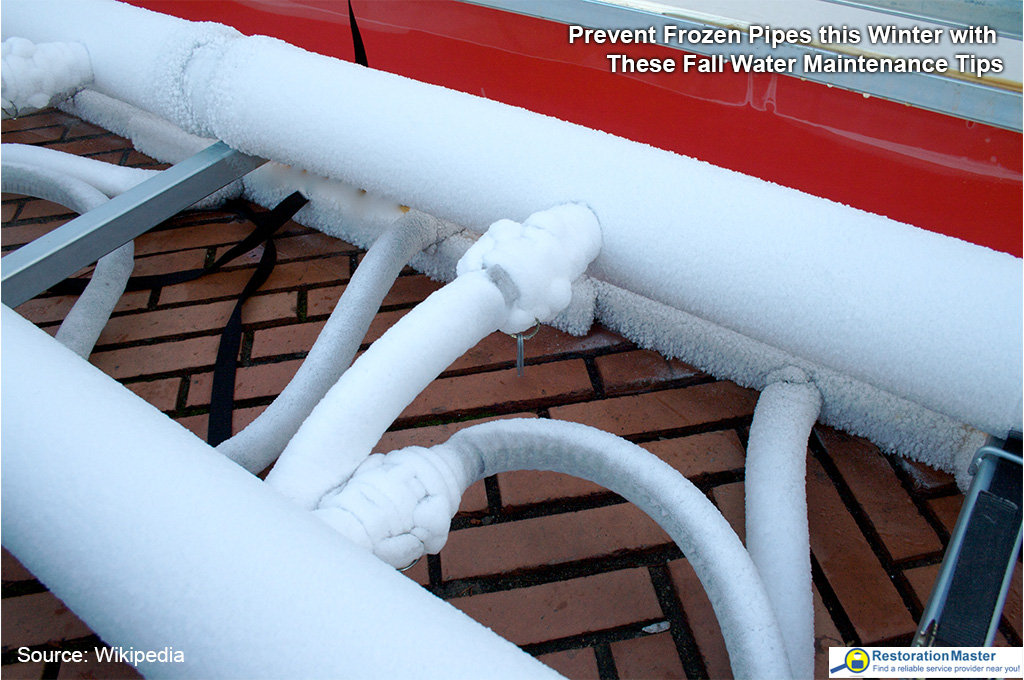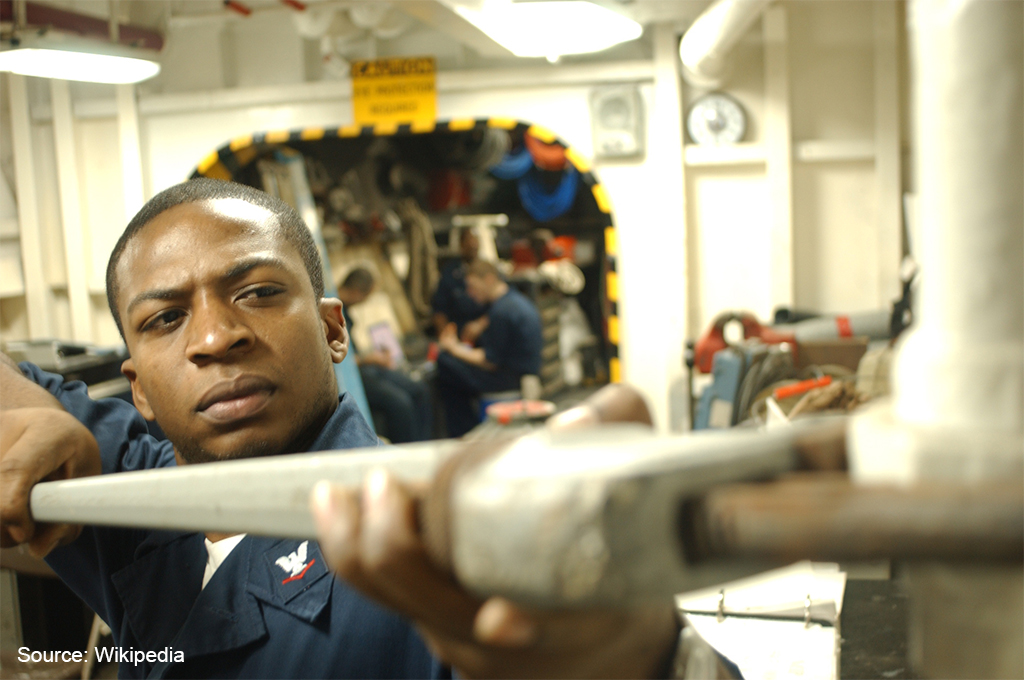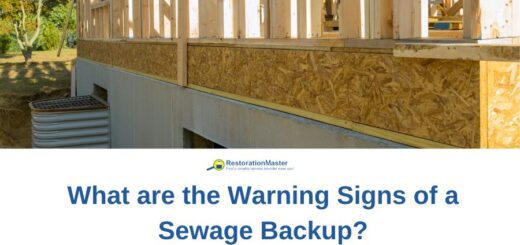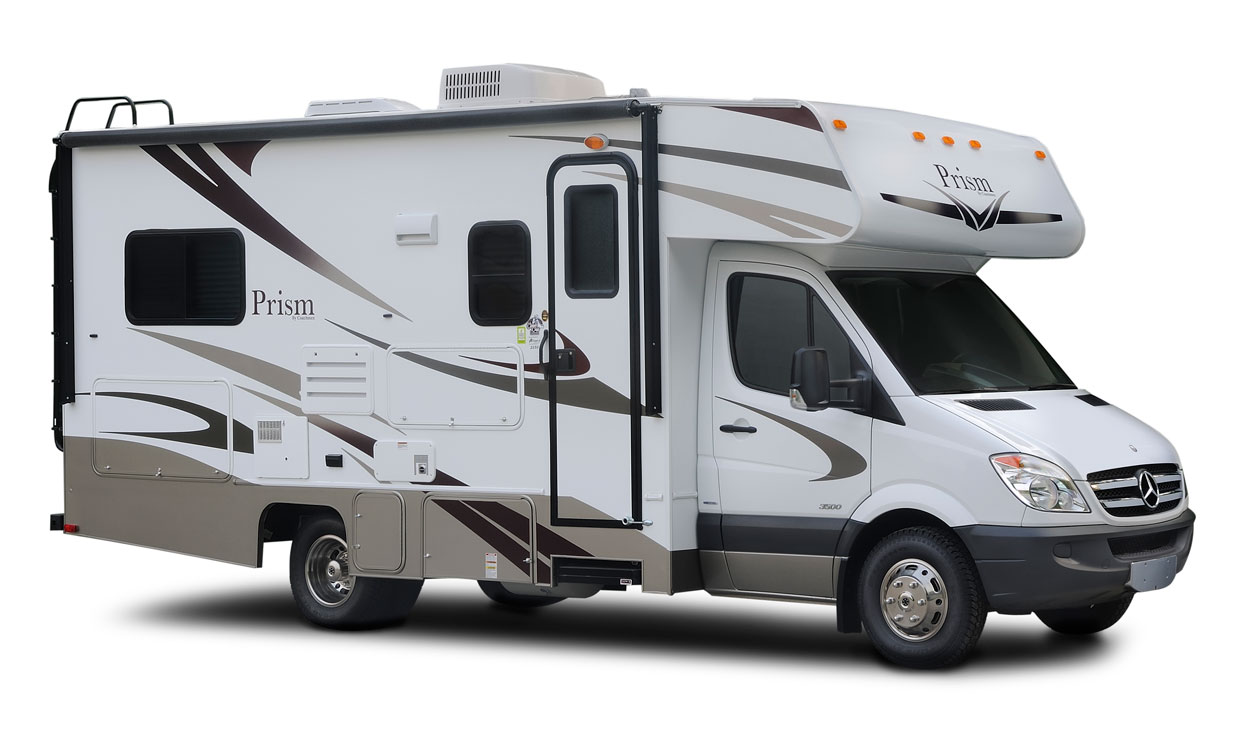Prevent Frozen Pipes this Winter with These Fall Water Maintenance Tips

Don’t let the pipes of your home get this look.
Water damage can occur in your home all year round, including in the middle of winter. One of the biggest sources of water damage and indoor floodingFlooding is the overflow or accumulation of water in areas t... More in the winter is burst pipes. Pipes tend to burst when the water inside them freezes, and they can spill out approximately 1000 gallons of water into your home in a 24-hour period. This amount of water can flood areas of your home and cause extensive damage.
The flooding and water damage inside your home from a burst pipe is highly inconvenient to deal with in the middle of winter. Fortunately, you can help prevent water damage from frozen pipes by performing some pipe maintenanceMaintenance is the routine care, inspection, and repair of a... More around the house in the fall. These tips will help you prepare the pipes inside and outside your house for the cold winter temperatures which will help prevent them from freezing.
How do Pipes Freeze and Burst?
Pipes can burst for a number of reasons, including damage to the pipes, rusting, and wear and tear. During the winter, the most common cause of pipe bursts is frozen pipes.
When the temperature drops below freezing, it can cause the water inside pipes in vulnerable areas to freeze. When the water freezes, the ice within the pipe expands which creates a lot of pressure. The pressure will eventually cause the pipe to burst and spill water into your home. Pipes that are in unheated or uninsulated areas are at the highest risk of freezing, but pipes anywhere within your home can freeze when the temperature gets cold enough.
The good news is that frozen pipes are largely preventable. The late summer or fall is the ideal time to take care of some necessary pipe maintenanceMaintenance is the routine care, inspection, and repair of a... More to greatly reduce the risk of frozen and burst pipes when the winter arrives.
Pipe Maintenance Outside your Home

A technician performs maintenanceMaintenance is the routine care, inspection, and repair of a... More
Your pipe maintenanceMaintenance is the routine care, inspection, and repair of a... More should start outside your home. Make sure to complete the following pipe maintenanceMaintenance is the routine care, inspection, and repair of a... More tips before the cold weather arrives:
- Turn off sprinkler system: If you have a sprinkler system or irrigation system in your yard, turn it off for the winter. Water within the system can freeze in cold temperatures and cause damage to the sprinklers or system. It is also unnecessary to keep the sprinkler system on past the fall because plants become dormant once the temperature drops below a certain point.
- Take in garden hose: Make sure to disconnect and drain your garden hose and store it in your garage, shed, or inside your home. You should also shut off the water to the outside to prevent the faucets and hose bibs from freezing. You can further protect hose bibs from freezing with molded foam insulating covers. Open the outdoor faucets and keep them open so excess water can drain.
- Seal foundation: Check the points where outside pipes enter your home and caulk around the opening to close any spaces. You should also close your foundation vents. By sealing off the vents and entry points of the pipes, you can help reduce excess cold air from entering the home that could cause the pipes to freeze. Just remember to reopen the foundation vents in the spring.
Pipe Maintenance Tips Inside Your Home

Wien Frozen Pipes
For the most part, keeping your home heated during the winter will help prevent frozen pipes. However, there are several additional steps you should take to further reduce the risk of frozen pipes in the winter:
- Insulate the pipes: As mentioned above, the pipes in uninsulated and unheated areas are the most at risk of freezing. This includes pipes in the basement, crawlspace, attic, garage, and other similar areas. Insulate pipes in these areas using insulated tape or molded pipe sleeves, and make sure to cover all exposed pipes, valves, and pipefitting. Your pipes will be better protected from freezing the more insulationInsulation is a material used in buildings to reduce the tra... More you use.
- Use heat tape or heat cables on pipes: Instead of using pipe insulationInsulation is a material used in buildings to reduce the tra... More, you can wrap pipes in heat tape or heat cables that are thermostatically controlled. Make sure you use heat tape and cables according to their intended use and follow the manufacturer’s instructions for installation and operation.
- Seal air leaks: Air leaks can increase the risk of frozen pipes by letting in cold air. Look for air leaks throughout your home including near doors and windows, electrical wiring, pipes, and dryer vents. Seal all air leaks that you find using caulk or insulationInsulation is a material used in buildings to reduce the tra... More.
- Check main shut-off valve: Every home has a main shut-off valve where you can completely shut off the water in your home. Make sure you locate this valve within your home and that it is working properly. If a pipe in your home bursts, you must turn off the water at the main shutoff valve.
Call a Restoration Professional When a Pipe Bursts
Frozen pipes are highly inconvenient in the winter and if the pipes are not thawed quickly enough, they could burst and cause water damage. If you take care of the pipe maintenanceMaintenance is the routine care, inspection, and repair of a... More described above in the fall, you can help prevent frozen pipes and reduce the risk of pipe bursts in and around your home.
However, even with the proper maintenanceMaintenance is the routine care, inspection, and repair of a... More, it is still possible for pipes to burst in the middle of winter. Remember to turn off the water shut-off valve if a pipe bursts and contact a professional for water damage restoration. These professionals will remove the water that has spilled into your home and restore the damage to the affected areas.













2 Responses
.
thanks!!
.
thanks for information.